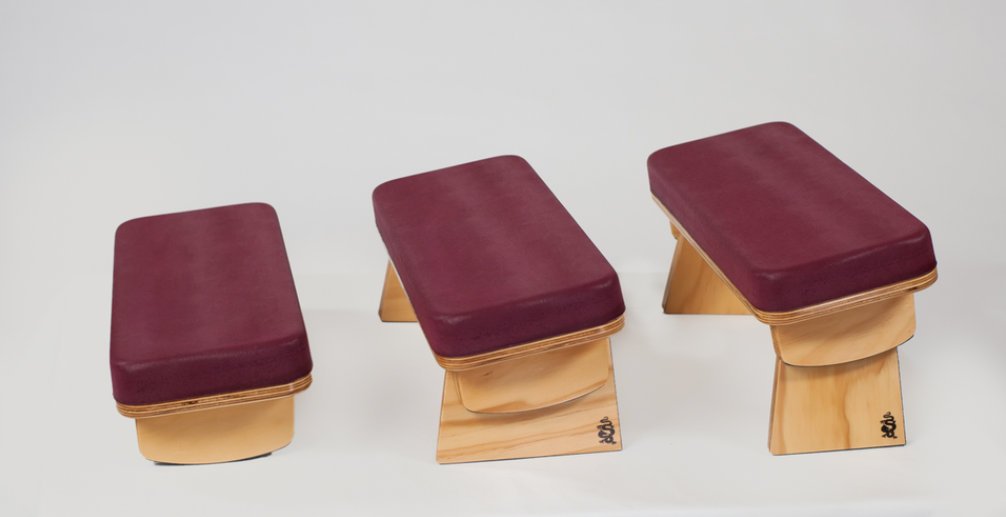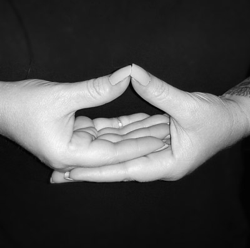There are many different approaches to sitting in meditation – and the good news is that there is no right or wrong way with two exceptions. You should be able to sit with an upright spine and you should be comfortable.
Some people find full or half lotus the most comfortable sitting position in which to meditate, while others prefer to sit on a meditation cushion (and there are many different types). You can find an article on the different meditation seats / cushions available at the Yoga Journal. There are also some very good meditation stools, again some varieties here, but most are kneeling stools and many people find them very comfortable. My preference is for the Black Dragon Meditation Stools that are made here in Australia and are an affordable price. See picture below.

If you are new to meditation, the simplest and easiest way to meditate is on a chair. Just a normal dining room chair or an office chair is fine – preferably with no arms and a straight back.
Hand position is another frequently asked question. There are many different hand positions for meditation in Buddhism and these are called mudras. The most common mudra in meditation is the Dhyana, pictured below. It involves placing your right palm in a resting position on top of your left palm with your thumbs meeting in the middle. The Buddha is often depicted meditating in this position. You can check out variety of hand positions in this article from The Chopra Centre.

But again, as with meditation seats, hand position is more about comfort as you begin to meditate. Simply resting your hands on your thighs in a comfortable position is sufficient.
Just remember, the most important thing in meditation is that you do it! All you need is a quiet private space, a comfortable seating position and your hands resting gently and you’re ready to go!

